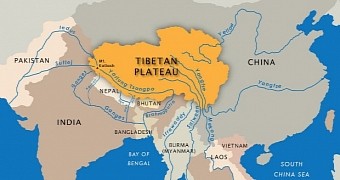A team of archaeologists with the Washington State University in the US believe to have at long last solved the mystery surrounding the sudden collapse of an ancient civilization that once thrived in the Tibetan Plateau.
Writing in the journal Proceedings of the National Academy of Sciences, the researchers explain that, according to evidence at hand, it was climate change that drove these people away or forced them to completely turn their lives around to survive.
“Climate change may be responsible for the abrupt collapse of civilization on the fringes of the Tibetan Plateau around 2,000 BC,” the Washington State University archaeologists behind this investigation write in a report detailing their work.
Millennia ago, temperatures in the Tibetan Plateau plummeted
Archaeological evidence uncovered over the years indicate that, in ancient times, people living in the Tibetan Plateau cultivated a whole lot of millet, which counted as their primary food source.
Specialist Jade D'Alpoim Guedes and colleagues explain that, when these people started growing millet, temperatures in the area were fairly warm. About 4,000 years ago, however, a period of so-called global cooling happened.
As a result, the ancient civilization of the Tibetan Plateau could no longer cultivate millet and collapsed. Things got better about 300 years later, when people got into the habit of growing the more cold-resistant wheat and barley.
Climate change influenced the history of the Tibetan Plateau
By forcing people to give up on cultivating millet and change their lifestyle all of a sudden, this period of cooling that hit the Tibetan Plateau 4,000 years ago left its mark on the history of the region, archaeologists explain.
“The introduction of wheat and barley really enabled Tibetan culture to take the form it has today,” Washington State University researcher Jade D'Alpoim Guedes said in a statement, as cited by Science Daily.
Interestingly, the specialists behind this investigation expect that, as temperatures continue to up in the years to come as a result of global warming, millet crops might make a comeback in this corner of the world.

 14 DAY TRIAL //
14 DAY TRIAL //